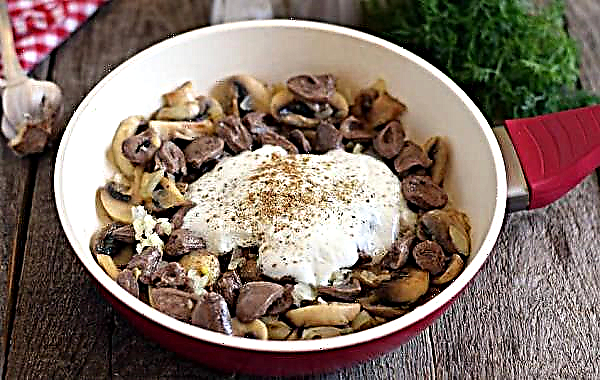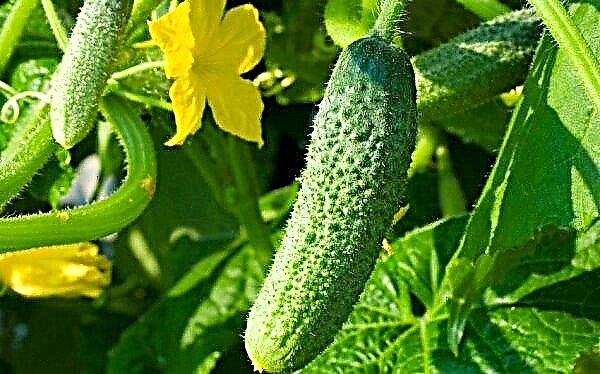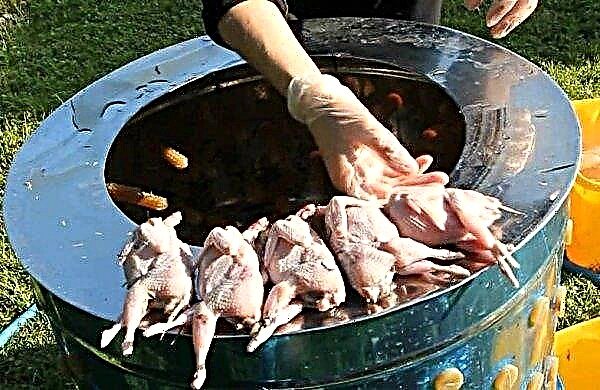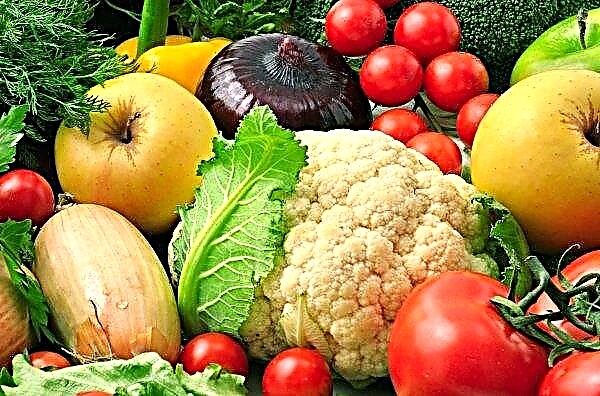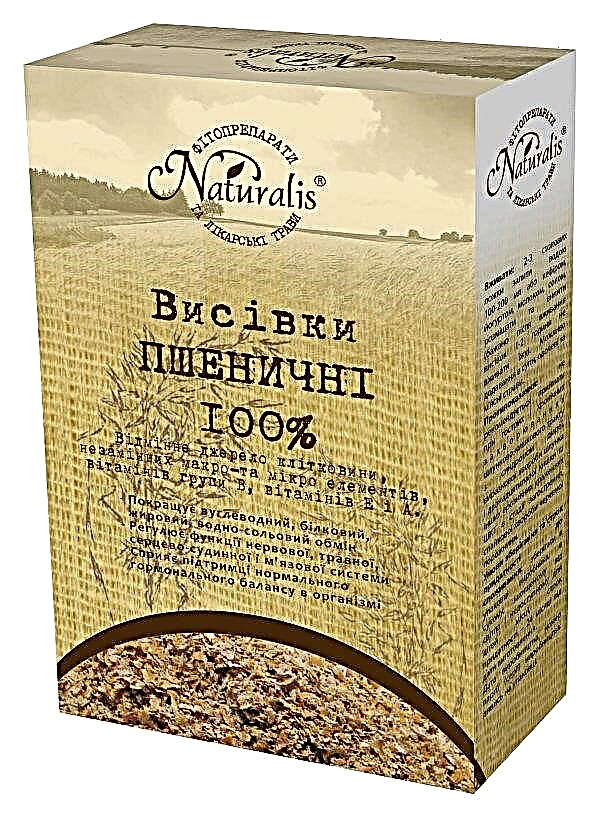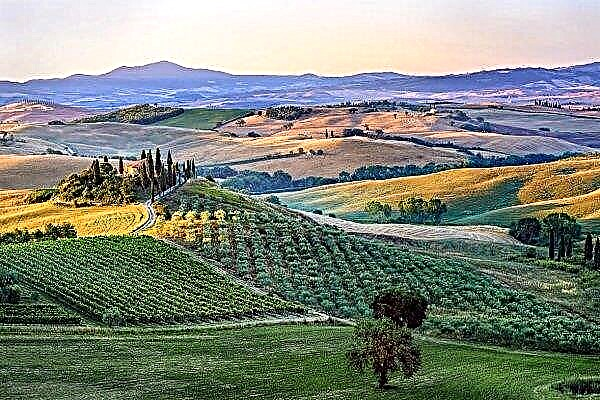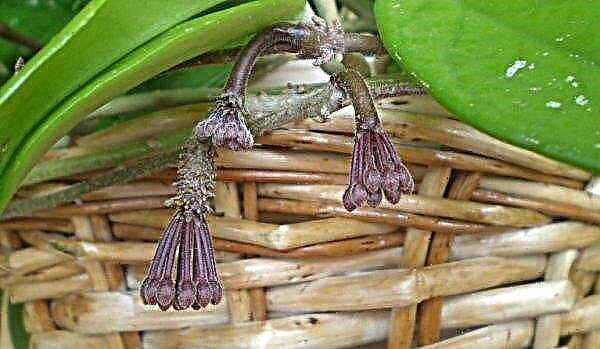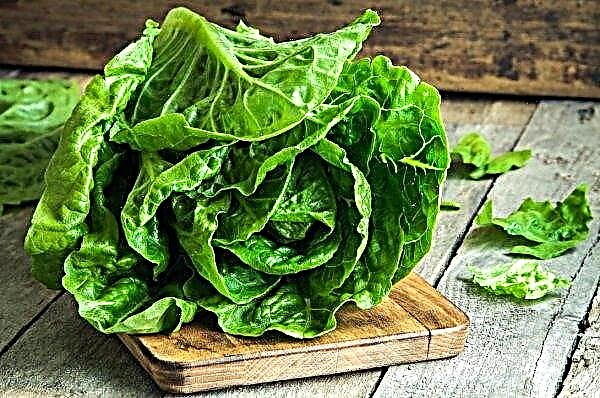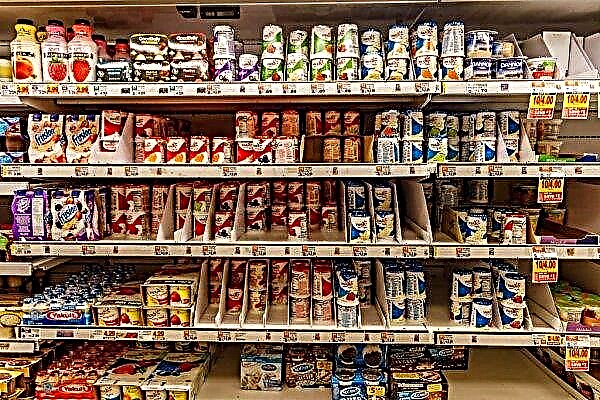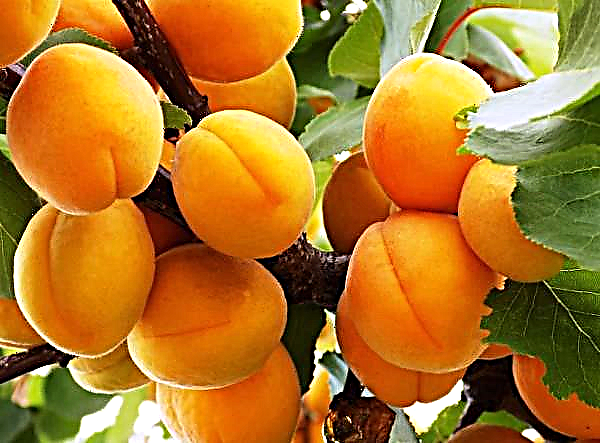Very often, beginning gardeners, focusing on caring for fruit trees and vegetables, leave out the beds of greens. Meanwhile, to obtain a good dill crop, regular feeding is very necessary, without them, the culture does not grow well, withers and dries. This review provides detailed information on how and how to fertilize dill during the season.
Why is feeding necessary?
There are two main reasons why fertilizing is necessary for the normal growth of dill. The first is that this plant, in principle, makes rather high demands on the composition of the soil and may not even sprout on scanty badlands.
The second is the precociousness of the culture: if most of the vegetables in the garden sprout, gain strength, bloom and form fruits from spring to late autumn, others are even perennial, and sometimes it’s enough to feed them once every several years, then dill passes this process literally in 20 days.Did you know? Dill has been known to mankind since ancient times, however, our distant ancestors did not use it as a seasoning. So, for example, in Ancient Egypt, fragrant grass was perceived exclusively as a medicinal plant, but the Greeks and Romans made decorative bouquets of it and presented it to their loved ones.
During this time, the grass quickly removes all the necessary nutrients from the soil, and when seeds are re-planted in the same place (namely, annual greens are usually grown), the soil is already unsuitable for providing dill full nutrition throughout the growing season.
The main types of fertilizing
In order to determine how to feed green spaces to get the best possible crop, you first need to know what fertilizers are and what exactly each of them is for.

There are several criteria by which fertilizers can be classified, but most often they are divided into two large groups depending on their origin - organic and mineral.
In turn, mineral fertilizers can be simple and mixed (complex). Sometimes organic and mineral substances selected in a special way are part of the top dressing. Such compounds are called organomineral or humic.
Organic
Organic fertilizers are nutrient mixtures consisting of animal or vegetable products. They contain all the minerals necessary for the life of plants, and these substances are in the exact form in which they are best absorbed by the root system.
That is why this type of fertilizer is the most valuable, the only problem in their application is the high price and complexity of obtaining (in order to become a fertilizer, organics must undergo a certain biological process - to rot, re-rot, decompose, digested in the stomach of an animal, etc.) .Did you know? The largest worm in the world reaches four meters in length. Such invertebrates live in Australia, the Gipsland region.
The most famous organic fertilizers used in the cultivation of dill include:
- manure (mixed in a single substance faeces of animals and the remains of litter, which was covered with flooring in the stable);
- compost (rotted plant debris mixed with earth);
- peat;
- bird droppings (for example, chicken coop);
- sludge;
- tree bark;
- sawdust;
- wood ash;
- green manure (annual, rarely perennial plants, planted on a bed for a short time and after a set or green mass mixed with earth to enrich it with organic matter);
- vermicompost (organic waste processed by earthworms and various soil microorganisms).

Simple mineral
Simple (or one-sided) mineral fertilizers are industrially produced preparations containing basically one nutrient necessary to ensure the life cycle of plants. Usually this element is in a soluble and easily digestible form.
In particular, simple mineral fertilizers may include:
- nitrogen - ammonium sulfate, calcium, ammonia or sodium nitrate, urea (urea), etc .;
- phosphorus - superphosphate, phosphate rock, precipitate, defluorinated phosphate, calcium monohydrogen phosphate, etc .;
- potassium - potassium sulfate, Kalimagnesia, Kalimag, potassium salt, etc.
Complex minerals
The value of simple mineral fertilizers is that they allow the gardener to independently combine the necessary nutrient compositions for a particular crop (for example, in the fruiting phase, an excess of nitrogen leads to a gain in green mass, which significantly reduces yield).
However, in some cases, in order not to deal with the calculation of dosages, weighing and mixing the components, it is much more convenient to use the finished product, in which all of them are already selected in the right proportions.

This role is played by complex mineral fertilizers, the most famous of which include:
- ammophos, carboammophos, nitrophos, nitroammophos (nitrogen + phosphorus);
- ammofosk, nitrofosk and nitroammofosk (nitrogen + phosphorus + potassium);
- potassium nitrate (potassium + nitrogen);
- magnesium ammonium phosphate (nitrogen + magnesium + phosphorus);
- calcium metaphosphate or polyphosphate (phosphorus + calcium);
- potassium metaphosphate or polyphosphate (phosphorus + potassium);
- ammonium metaphosphate or polyphosphate, urea polyphosphate (phosphorus + nitrogen).
Humic
Humic, or organomineral, fertilizers are obtained industrially by transforming humic acids contained in such organic substances as peat, humus, silt, brown coal, etc., into a form accessible to plants. In addition to humates, the main “plant” minerals — phosphorus, nitrogen, and potassium — are usually added to such fertilizers.
The main disadvantage of these preparations is that in order to achieve a noticeable effect they must be used in very large quantities, so most often they are applied to the soil for autumn or spring digging, and not for seasonal top dressing. Examples of humic fertilizers include:
Examples of humic fertilizers include:
- humophos (humic acids + phosphorus);
- humophosk (humic acids + phosphorus + potassium);
- peat and ammonia fertilizers (humic acids + nitrogen);
- peat mineral ammonia fertilizers (humic acids + nitrogen + potassium);
- sodium humate (sodium salt of humic acid);
- potassium humate (potassium salt of humic acid).
Special
Sometimes a manufacturer of complex mineral or organomineral fertilizers, wanting to increase sales per inexperienced gardener, comes up with a beautiful name for his product and indicates the package that it is specifically designed for feeding a particular crop. Typically, the cost of this kind of product is slightly higher than other drugs with a similar composition.
Important! Special fertilizers are nothing more than an advertising move, but this does not mean at all that such preparations should not be bought to feed dill.
Here are some examples of such fertilizers:
- IZI Start TE-MAX;
- Novatek Solub;
- Hakafos Calcidic K-Max;
- Basfoliar joint venture;
- Basfoliar Avant Natur SL;
- Basfoliar Kelp SL;
- Basfoliar Frutis SL;
- Basfoliar Asset SL;
- Monopotassium phosphate Select MKP;
- Arvi NPK.
All the preparations listed in the list contain an additional recommendation from the seller that they are intended for parsley, salad and dill, although, in fact, they are nothing more than complex mineral fertilizers, which, in addition to phosphorus, nitrogen and potassium, can also include some other elements, such as, for example: zinc, manganese, sulfur, molybdenum, copper, boron, magnesium and iron.

Folk fertilizer methods
You can also feed dill with folk methods, using the so-called “green” fertilizers. For their preparation, you can use various field grasses and even weeds weeded from the garden. At a time when mineral fertilizers had not yet been invented, and there was nowhere to get organic fertilizers in large quantities, beds with dill were fertilized with nettle broth.
Did you know? According to legend, the ancient Greek poet and musician Sappho inhaled the magical aroma of dill green to feel inspired to create her immortal lyric songs.
The recipe turned out to be so successful that it is still used:
- Cut young nettles until the plant blooms.
- Place the stems in a deep container and pour water in a ratio of 1: 8.
- To dilute bread yeast in a small amount of warm water and wait until they “start up”.
- In order for the yeast to have food, add a little sugar to the bowl with nettles and a little sugar. A small amount of kvass will also help speed up the digestion process.
- Pour the "launched" yeast into the container, put it in a warm place and leave it for several days until the end of fermentation, stirring occasionally.
- When the foaming on the surface of the container decreases markedly, decant the mash.
- Before use, dilute dressing with water (1 liter of mash in a bucket of water).
- Fertilizer can be applied twice a month. Consumption - about 5 liters per 1 m² of area.
Important! Fertilizers should never be applied during the active growth of greenery. After the first sprouts appear, wait at least two weeks.
Rules and terms for feeding
The scheme and dosage of fertilizing under dill beds has some features, depending on whether greenery is grown in open ground or under film shelter.

In the open ground
In open ground, dill is usually fertilized according to the following scheme:
| Application Method: | Watering | Spraying |
| Number of top dressings | 1 | 2–3 |
| Application Time | 14 days after germination | after the end of the phase of active growth with a break of 2 weeks |
| Essential Substances | potassium, phosphorus, nitrogen, magnesium | calcium, nitrogen |
| Recommended dosage for 1 m² | superphosphate - 20-30 g; ammonium nitrate - 15–20 g; Kalimagnesia - 20–25 g | first feeding: urea - 30-60 g; second and subsequent feeding: calcium nitrate - 15–20 g |
Organic fertilizers are usually applied to the soil before sowing the seeds, but if this was not done in a timely manner, along with the main root top dressing, the bed can be watered with mullein diluted with water in a ratio of 1:10.
Important! What exactly is lacking in dill can be determined by the appearance of the plant: premature flowering indicates a lack of moisture and nutrients, the stem turns yellow due to nitrogen deficiency, and it turns red from excess potassium and water in the soil.
In the greenhouse
The main feature of greenhouse dill cultivation is that under the film this process can last year-round - both in winter and in summer. Therefore, it is especially important to worry about making all the necessary fertilizers before sowing, then for a short period of vegetation, the beds can not be fed at all.
A good way to saturate the soil with nutrients is to add a little superphosphate or nitrophosphate directly into the groove dug for seed laying (phosphorus, by the way, is best absorbed at the very moment of the initial phase of the growing season when the seed starts the first root).

If for some reason dill was sown in poor soil, two weeks after germination the garden is recommended to be watered with one of the following drugs:
| Fertilizer name | Dosage per 10 l of water, g |
| nitrophoska | 10–15 |
| ammonium nitrate | 15–20 |
| superphosphate | 20 |
| potassium sulfate | 20 |
As an organic fertilizer rich in potassium, the soil around the bushes is sometimes sprinkled with a small amount of wood ash.
Important! If during watering the fertilizer fell on the leaves, it must be washed off carefully with clean and slightly warmed water.
Additional recommendations
Oddly enough, unexpected problems arise with the cultivation of dill. It would seem like ordinary grass, and the bed after sowing the seeds either remains completely naked or is covered with thin painful twigs that quickly turn yellow, dry and get lost in the weeds clogging them.

In order for dill to be magnificent, strong and healthy, in addition to regular top dressing, several important rules should be observed, namely:
- It is necessary to choose a very bright place for the plant, in the shade you can forget about a good harvest.
- Culture is very sensitive not only to soil fertility (although this should not be forgotten), but also to its reaction. The pH level should ideally be in the range of 5.5–7.0, however, to reduce the acidity by liming leads to the fact that the branches change their color from green to red.
- The optimum temperature for dill is + 13 ... + 15 ° C.
- Proper crop rotation is an indispensable condition for a good harvest. Dill grows best after early cabbage, beets, pumpkin (cucumbers, zucchini) and nightshade (tomatoes, peppers, eggplant, potatoes). But after carrots, late cabbage, celery, fennel, parsley and other herbs, dill is undesirable.
- Another condition necessary to keep the green shoots fresh and strong is regular watering. It is because of the overdried air and soil that dill starts the arrow ahead of time and forms umbrellas with seeds.
- It is best to sow the seeds in mid-spring, and the bed is not formed linearly, but in a zigzag fashion. With this scheme, the emerging seedlings support each other and, in addition, do not require thinning.
- During the season, planting can be repeated, and with well-fertilized soil, you can completely grow greens in just 4-4.5 weeks, so at least three crops can sometimes be harvested per season.
Important! Dill seeds are covered with a dense layer of essential oil, which often prevents their germination. Therefore, before planting, seed should always be soaked for several days.
You should also not neglect such an important detail as the right choice of variety. Greens, like other agricultural plants, can differ in terms of ripening, optimal growing conditions (greenhouse or open ground), productivity, taste, frost resistance and other criteria. Sometimes it is the wrong variety that explains the lack of harvest.
To summarize. If dill does not grow well, this may mean that the plant simply lacks nutrients. Do not forget to regularly enrich the garden with them, follow the rules listed above, and fragrant greens will always be present on your table - fresh in the summer, and dried or frozen in the winter.

